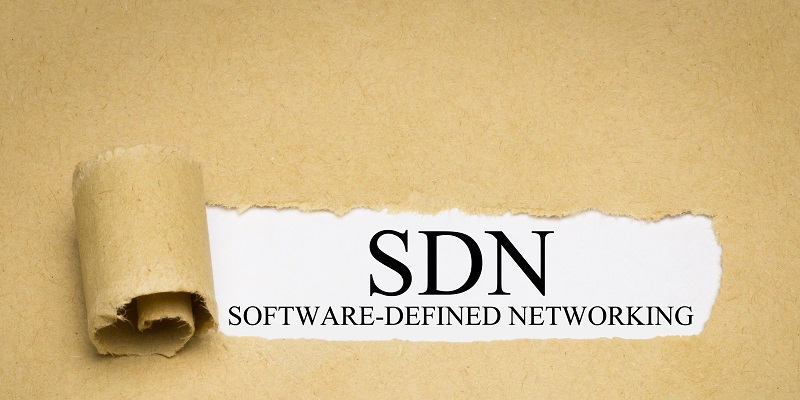As technology continues to evolve, traditional networks struggle to keep up. The demands of modern applications and workloads require a more flexible and agile approach to network management. This is where software-defined networking (SDN) comes into play. In this article, we will explore the benefits, components, and challenges of SDN.
At its core, SDN is a network management technique that centralizes control of network appliances in software. With SDN, the control plane is abstracted away from individual devices and is placed into a centralized, software-based controller that can run on a server in the data center. This allows networks to be administered as a whole, rather than on a device-by-device basis. It also enables administrative work to be automated and conducted on the fly in response to changing network needs and conditions.
Benefits of SDN
The benefits of SDN are numerous and impactful. Firstly, it simplifies network administration. By centralizing control, administrators can manage the network from a single interface. This eliminates the need to manage multiple devices individually, which can be time-consuming and error-prone. Additionally, with automation of administrative tasks, SDN allows administrators to focus on more strategic initiatives that improve network security and availability.
Data plane refers to the part of a network architecture that is responsible for forwarding and processing data packets. It involves the physical devices, such as routers and switches, as well as the software and protocols that enable the movement of data across a network.
In network communication, the data plane forwards incoming network packets to the appropriate destination by examining the destination address and forwarding the packet along the appropriate physical path within the network.
The control plane in SDN (Software-Defined Networking) is responsible for managing and directing network traffic in the data plane through network policies and rules
In an SDN, the control plane is centralized and managed by a software-based controller. This controller communicates with individual devices to determine how they should behave. When a packet arrives at a device, it queries the controller to determine how it should be forwarded. The controller then determines the appropriate path for the packet and sends the forwarding information to the device.
Components of SDN
There are three main components to a software-defined network: the controller, applications, and devices. The controller is the brain of the network, providing centralized control and management. Applications can be used to manage specific aspects of the network, such as security or quality of service (QoS). Devices, including switches and routers, are responsible for forwarding packets according to the instructions provided by the controller.
Virtual network
In a virtual network, network devices are simulated as virtual machines running on servers or in the cloud. This creates a logical network that overlays the physical one, allowing administrators to segment the network more effectively and create isolated environments for testing and development.
Management of the software controller
The software controller is managed by applications that can fulfill a variety of network administration roles. These applications can be written in a range of programming languages, including Java and Python. They are used to provide analytics, automate processes, and manage security.
Advantages of SDN
Software-defined networking (SDN) has many advantages, including:
1. Centralized management: SDN allows for network management to be centralized, making it easier to configure and control the network.
2. Programmability: SDN provides a programmable interface that allows for the creation of new network services and applications.
3. Flexibility: With SDN, network administrators can quickly and easily change network policies, which allows for greater flexibility.
4. Scalability: SDN’s architecture allows for better scalability, which makes it easier to add new hardware or software to the network.
5. Cost savings: With SDN, organizations can save money by using commodity network hardware and software, reducing the need for expensive proprietary hardware.
SDN delivers a number of specific advantages. Firstly, network programmability allows administrators to automate and orchestrate network operations. This enables rapid configuration changes and simplifies network management. Additionally, SDN allows for ease in establishing and changing policies, enabling administrators to adjust the network to the changing needs of the business. Network visibility is also greatly improved, allowing for better decision-making and troubleshooting. Finally, SDN can deliver significant cost reductions by reducing capital expenditures (CAPEX) and operational expenditures (OPEX).
Challenges of Implementing SDN
In general, rolling out a software-defined network requires a major restructuring of the network, which can demand a lot of staff hours and offset some of the promised OPEX savings. This can be especially challenging for larger organizations with complex networks. Additionally, there may be compatibility issues with legacy equipment, which may demand upgrades or replacements. Finally, there is a steep learning curve for administrators who are not familiar with SDN, which can lead to additional staff training costs.
It is important to approach an SDN rollout with awareness of potential pitfalls. Although the benefits of SDN are significant, there are challenges associated with its implementation. However, for many organizations, the benefits far outweigh the costs. SDN provides a more flexible and agile approach to network management that is well-suited to the demands of modern applications and workloads. With proper planning, SDN can help organizations streamline operations, reduce costs, and improve network availability and security.

